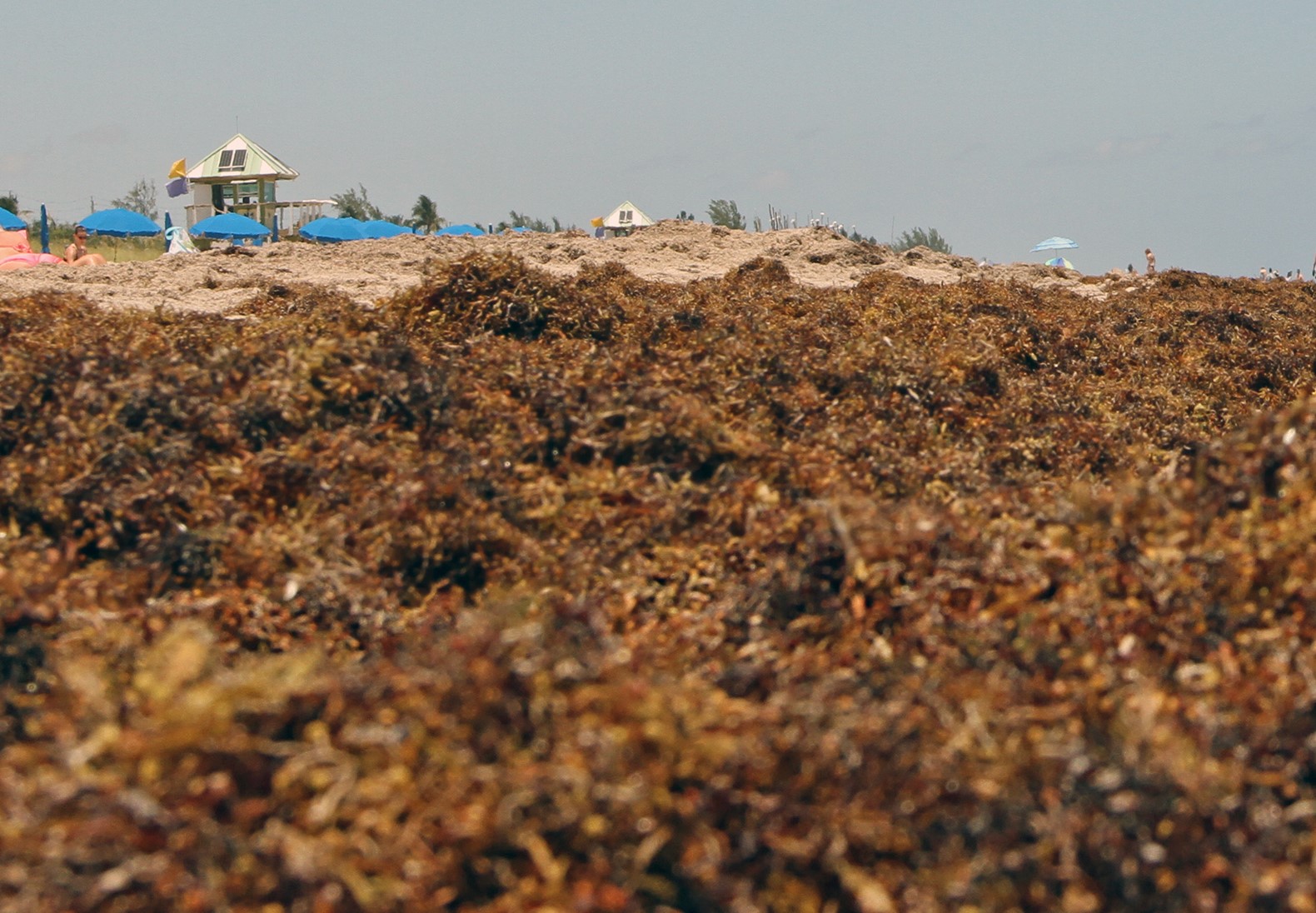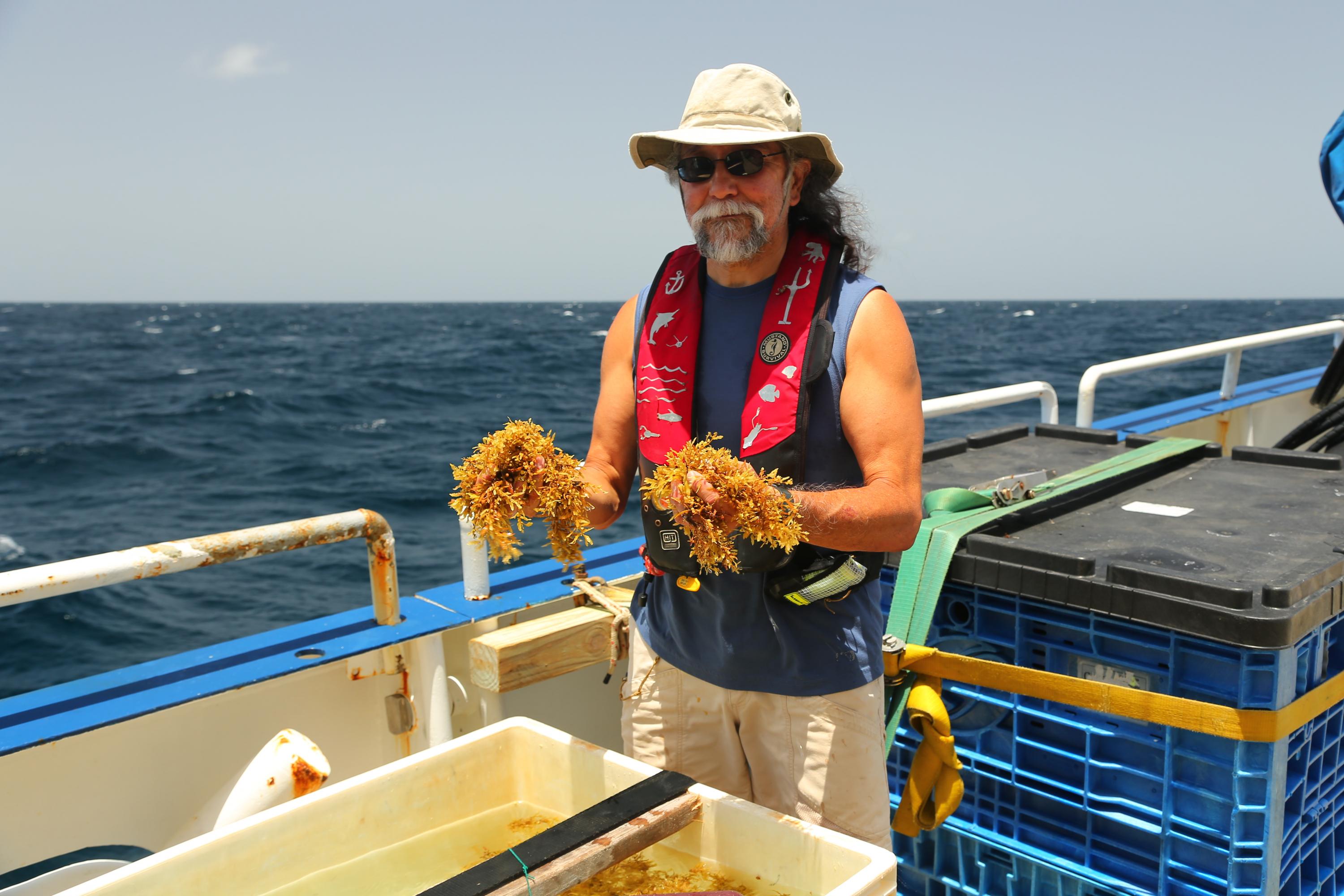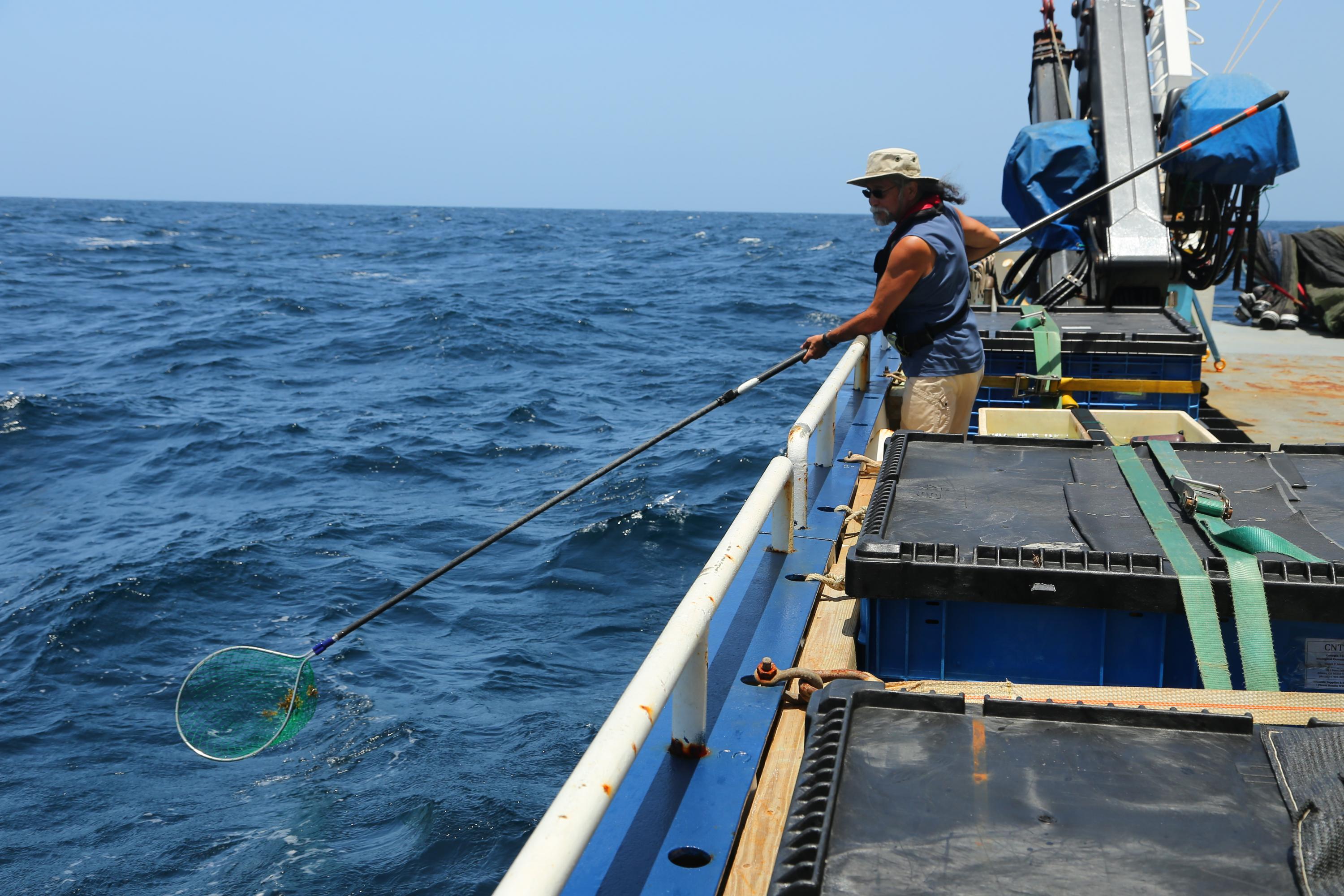A team of scientists from the University of South Florida, Florida Atlantic University, and Georgia Institute of Technology used NASA satellite observations to discover the largest bloom of macroalgae in the world, an event that blankets the surface of the tropical Atlantic Ocean from the west coast of Africa to the Gulf of Mexico.
The belt of brown macroalgae called Sargassum forms its shape in response to ocean currents. This happened last year when more than 20 million tons of it – heavier than 200 fully loaded aircraft carriers – floated in surface waters and wreaked havoc on shorelines of the tropical Atlantic, Caribbean Sea, Gulf of Mexico, and east coast of Florida.
The team, which reported their findings July 4 in the journal Science, used environmental and field data to suggest that the belt forms seasonally in response to two key nutrient inputs: one human-derived, and one natural. In the spring and summer, Amazon River discharge adds nutrients to the ocean, and such discharged nutrients may have increased in recent years due to expanded deforestation and fertilizer use. In the winter, upwelling off the West African coast delivers nutrients from deep waters to the ocean surface where the Sargassum grows.
“Our measurements of nutrient concentrations in surface waters of the Western Tropical North Atlantic showed greater nitrate and phosphate availability in spring 2018 than in spring 2010, a pattern consistent with increased inputs from the Amazon River due to land use changes in the drainage basin,” said Joseph Montoya, a professor in Georgia Tech’s School of Biological Sciences. “The increase in nitrate concentration is particularly important since the growth of photosynthetic organisms like Sargassum is typically limited by nitrogen availability.”
In patches of the open ocean, Sargassum contributes to ocean health by providing habitat for turtles, crabs, fish, and birds and producing oxygen via photosynthesis like other plants.
But too much of this seaweed makes it hard for certain marine species to move and breathe, especially when the mats crowd the coast. When it dies and sinks to the ocean bottom at large quantities, it can smother corals and seagrasses. On the beach, rotten Sargassum releases hydrogen sulfide gas and smells like rotten eggs, potentially presenting health challenges for people on beaches who have asthma, for example. The bloom has gotten so large that researchers have dubbed it the Great Atlantic Sargassum Belt.
Analyzing data from NASA’s Moderate Resolution Imaging Spectroradiometer (MODIS) between 2000-2018, the researchers found a possible shift in Sargassum blooms since 2011.
“During our 2018 research cruise to the Western Tropical North Atlantic, we saw large rafts of Sargassum throughout our work area, a clear contrast to previous cruises to the region in 2010 and 2011,” Montoya said. “This study is a great example of how satellite remote sensing can be combined with work at sea to provide insight into a complex biological response to changes on land and in the ocean.”
Before 2011, most of the pelagic Sargassum in the ocean was found floating in patches around the Gulf of Mexico and Sargasso Sea. The Sargasso Sea is located on the western edge of the central Atlantic Ocean and named after its prolific algal resident. Christopher Columbus first reported Sargassum from this crystal-clear ocean in the 15th century, and many boaters of the Sargasso Sea are familiar with this seaweed.
“The evidence for nutrient enrichment is preliminary and based on limited field data and other environmental data, and we need more research to confirm this hypothesis,” said Chuanmin Hu of the University of South Florida College of Marine Science, who led the study and has studied Sargassum using satellites since 2006. “On the other hand, based on the last 20 years of data, I can say that the belt is very likely to be a new normal.”
In 2011, Sargassum populations started to explode in places it hadn’t been before, like the central Atlantic Ocean, and it arrived in gargantuan gobs that suffocated shorelines and introduced a new nuisance for local environments and economies. Some countries, such as Barbados, declared a national emergency last year because of the toll the seaweed took on tourism.
“The scale of these blooms is truly enormous, making global satellite imagery a good tool for detecting and tracking their dynamics through time,” said Woody Turner, manager of the Ecological Forecasting Program at NASA Headquarters in Washington.
The team analyzed fertilizer consumption patterns in Brazil, Amazon deforestation rates, Amazon River discharge, two years of nitrogen and phosphorus measurements taken from the central western parts of the Atlantic Ocean, among other ocean properties.
“The ocean’s chemistry must have changed in order for the blooms to get so out of hand,” Hu said. Sargassum reproduces vegetatively, and it probably has several initiation zones around the Atlantic Ocean. It grows faster when nutrient conditions are favorable and when its internal clock ticks in favor of reproduction.
While the data are preliminary, the pattern seems clear: the explosion in Sargassum correlates to increases in deforestation and fertilizer use, both of which have grown since 2010.
“This is all ultimately related to climate change because it affects precipitation and ocean circulation and even human activities, but what we’ve shown is that these blooms do not occur because of increased water temperature,” Hu said. “They are probably here to stay.”
This work was funded by several programs in NASA’s Earth Science Division, NOAA RESTORE Science Program, the JPSS/NOAA Cal/Val project, the National Science Foundation, and by a William and Elsie Knight Endowed Fellowship.
This article was based on a news release from the University of South Florida.
For More Information Contact
Georgia Tech: John Toon, Research News
University of South Florida: Kristen M. Kusek, 727-692-6482, kkusek@mail.usf.edu





